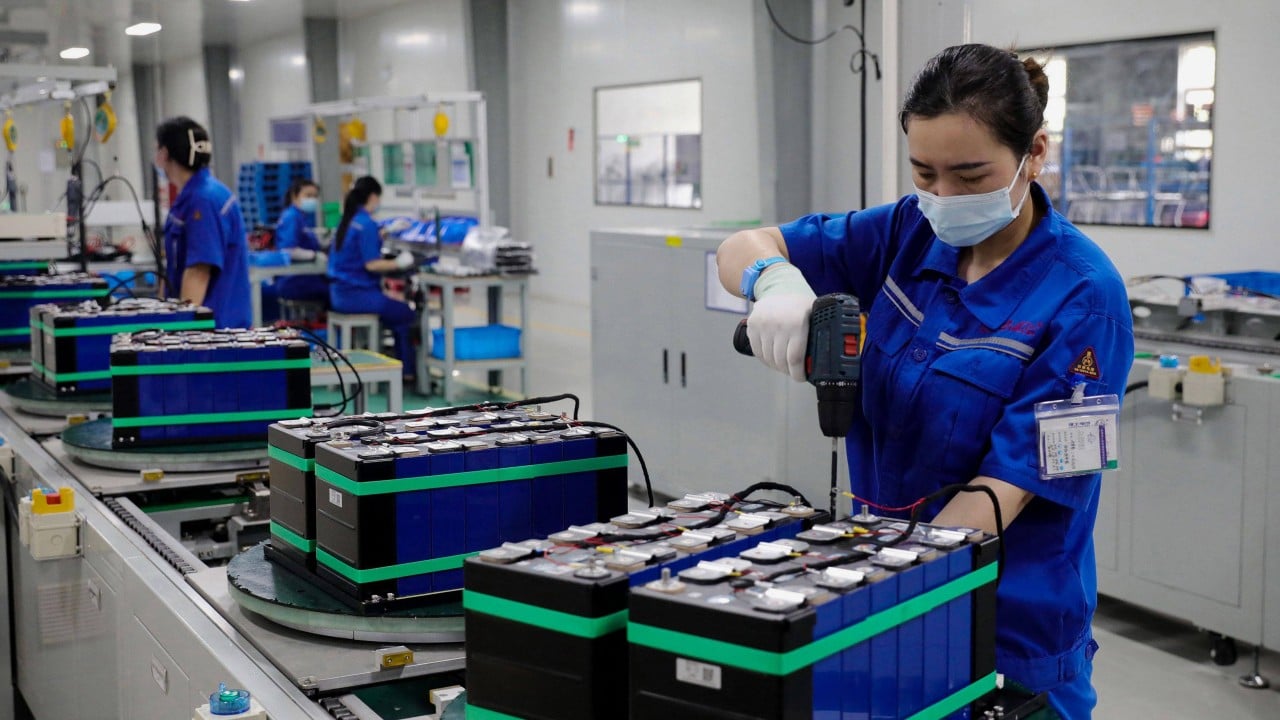Scientists in China have found a way to build a longer lasting lithium battery by using discarded solar panels.
The researchers created silicon battery anodes and then combined them with a new type of electrolyte to make a lithium battery that can hold more energy than batteries that have traditional graphite anodes.
“Lithium-ion batteries based on graphite anodes are rapidly approaching their energy density ceilings [300 watt-hours per kg] but cannot meet the ever-increasing demands of electric vehicles,” the researchers wrote in a paper published in peer-reviewed journal Nature Sustainability on July 16.
The “silicon … anode is widely viewed as a game changer for lithium-ion batteries due to its much higher capacity than the prevalent graphite and availability in sufficient quantity and quality,” the team from the Qingdao Institute of Bioenergy and Bioprocess Technology wrote in the paper.
When fashioned into a pouch battery – a type of lithium-ion battery featuring a flexible, lightweight design that is used to power electric and hybrid vehicles – the anode and electrolyte achieved an energy density of 340 watt-hours per kg for 80 charging and discharging cycles, well beyond the limit of graphite anodes.
The low-cost silicon anodes (the negative electrodes) had an average coulombic efficiency – or charge efficiency – of 99.9 per cent, and were able to retain 83.1 per cent of their capacity after 200 charging cycles.

“The sustainable sourcing of silicon from discarded solar panels mitigates both the economic and environmental impacts of photovoltaic waste,” said Dong Tiantian, co-first author of the paper.
“Converting waste into valuable battery components significantly reduces the cost of lithium-ion batteries and increases their accessibility,” Dong said in a news release from the Chinese Academy of Sciences (CAS), which the Qingdao institute is a part of.
Graphite anodes are used globally in electric vehicles, but their production is largely reliant on China’s production and export of graphite.
More than 90 per cent of the graphite used in electric vehicle anodes comes from China, the world’s top producer and exporter of graphite, according to a report from Reuters.
Last year, China curbed exports of graphite, requiring export permits for certain products, a move likely in response to US-led curbs on China’s electric vehicle exports.
The world’s graphite reserves are limited, although the industry is now moving towards producing synthetic graphite – which is energy intensive – to meet demand, Reuters reported.
Silicon offers an appealing alternative as it is the second most common element in the Earth’s crust and can be found around the world.
“In theory, the energy density of lithium-ion batteries could increase by over 35 per cent if the graphite anodes were completely replaced with [silicon] anodes,” the team wrote in their paper.
However, some obstacles limit the commercial deployment of silicon anodes, including mechanical fracturing of the silicon.
Nano-sized silicon has previously been used to overcome some of these issues, but the manufacturing process is more expensive and slower.
To help overcome the problems, the researchers used micro-sized silicon particles derived from the silicon found in solar panels.
“This work not only suggests a more sustainable supply source for silicon particles but also addresses the major challenges facing micro-sized silicon anode materials,” co-first author Liu Tao told CAS.
“This recycling strategy not only substantially lowers the overall cost of lithium-ion batteries but also encourages the development of sustainable battery materials that are both efficient and environmentally friendly,” the team said.
The team utilised a flexible solid-electrolyte interphase – a protective layer that forms on the anode – which helped reduce the impact of fracturing and other undesirable reactions.
The anodes, and the accompanying lithium hexafluorophosphate and ether-based electrolyte, proved to be operationally stable in temperatures ranging from -10 to 55 degrees Celsius (14 to 131 degrees Fahrenheit).
“By using recycled materials and advanced chemical engineering, we have demonstrated that high-performance and environmentally sustainable lithium-ion batteries are not only possible, but also within reach,” said Cui Guanglei, author and professor at the Qingdao Institute.
Cui told CAS that he was optimistic that their work could help lead to next generation batteries for use in both electric vehicles and grid-scale energy storage.


